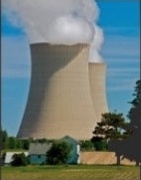May 26, 2019
This month in India marked 21 years of the 1998 Pokharan nuclear tests, amid an acerbic and jingoist election campaign, resulting in the Hindu nationalist BJP’s return to power with Mr. Narendra Modi at the helm. Now that the cacophony of the election season is over, and the PM has extended greetings to his Pakistani counterpart, it is time we think more seriously about the impacts of intensifying militarization in a nuclear South Asia. We interviewed Prof. Robert Jacobs of the Hiroshima Peace Institute on the various human, climatic and political implications of nuclear tests.
) The general perception in India is that underground nuclear tests did/do not have much health impacts. What is your experience as part of the Global Hibakusha project?
Underground nuclear weapon tests absolutely have health effects. These effects are simply distributed and experienced differently than atmospheric nuclear weapon test effects. In any nuclear weapon detonation fission products are created: we think of this as radioactive fallout. It is important to separate our understanding of the chemical and radiological toxicity of this fallout from how it is distributed and encountered.
When a nuclear weapon is detonated in the atmosphere, the mushroom cloud fills with these fallout particles, and as the cloud drifts the particles “fall-out” of the cloud and deposit along the ground below. Much of this fallout deposits immediately downwind from the test site. If the weapon is big enough, the cloud can reach into the upper levels of the atmosphere, and a significant portion of the fallout can then be transported around the world, and may come down to Earth at any location.
This fallout will remain dangerous for various amounts of time, depending on the particle. Iodine-131 is not dangerous for long, but it is very dangerous, especially for children, who encounter it in the short-term. Cesium-137, which is such a problem from the fallout at Chernobyl and Fukushima, will remain dangerous for about 300 years. Plutonium will remain dangerous for 240,000 years.
The danger comes primarily from internalizing the particle inside of the body by swallowing or inhaling it. During the time that the particle is dangerous it will continue to transport through the ecosystem, taken up by one creature or plant, transferred to another when the first decays after death or is eaten—then concentrating the particles up the food chain.
This is fairly well understood. When a nuclear weapon is tested underground the same materials are created, they are simply not distributed downwind by a cloud: they are concentrated in the soil and water table close to the test site. For short lived particles, this may remove them from being a significant threat. But for particles that have long half-lives, like plutonium, they are all still present, and they will begin to transport through the ecosystem: nothing changes the nature of these particles. The only difference with an underground test is their distribution. Populations can be kept back from the areas immediately around the test site, but for the longer-lived particles, it is only a matter of time before they migrate from that site into the surrounding ecosystem.
[…]
3) What are the ways in which the Anthropocene concept has brought more attention to the plight of affected communities, as nuclear tests are now considered signatures of irreversible climate change?
[…]
The connection to irreversible climate change is not a causal one: nuclear tests have not contributed in a significant way to global heating. However, the Anthropocene frame helps us to see how global heating from the burning of fossil fuels, and the spread of transuranic elements and widespread distribution of radionuclides are both signatures of modern human activities.
The primary nuclear issue relating to the Anthropocene is the dilemma of what to do with the spent nuclear fuel from the nuclear power plants that we have operated both to produce plutonium for nuclear weapons and to produce electricity. These hundreds of thousands of tons of spent fuel rods will remain dangerous for over 100,000 years and we are currently in the process of pretending that we can adequately and successfully isolate and contain this waste so it does not harm living creatures in the future.
4) Most popular discourses and imaginations around the nuclear age remain confined to Hiroshima and Nagasaki, leaving out the fallout from nuclear tests over decades. Why? What are the implications?
Here in Hiroshima when I present lectures to visiting students about the history of the nuclear attacks on Hiroshima and Nagasaki, I always include a section at the end of the lecture about how nuclear weapons have changed since 1945. There is a tendency for people who visit here and see the horrifying destruction that those weapons wrought, or how have learned about Hiroshima and Nagasaki at school, that this is what a nuclear weapon does. I tell these students that looking at Hiroshima is like looking at a gunshot victim in 1600, it doesn’t tell you very much about gun violence today.
In less than 10 years after the nuclear attacks here humans had developed thermonuclear weapons, or h-bombs. These weapons are not simply thousands of times more powerful than a-bombs, they are far more dire. When we think of thermonuclear weapons as being larger than a-bombs, we are thinking in terms of force, of blast. What h-bomb tests like the Bravo test on March 1, 1954 showed us was that you could be 100km away from the detonation point of such a weapon and be killed by it. While the blast and heat of a thermonuclear weapon is vastly larger, it is the capacity of these weapons to kill tens of millions of people with radioactive fallout that is what makes them revolutionary.
[…]
I would specifically encourage those suffering from Indian nuclear weapon tests to make community with those suffering from Pakistani nuclear tests. It was animosity between these two governments that caused the harm to both communities. Bonding together can be a step towards healing that hatred, and to building the kind of links that can help us avoid additional damage to the citizens of both nations.
Such an organization was formed at the end of the Cold War between the communities living near the Polygon nuclear test site of the Soviet Union in Kazakhstan and the Nevada Test Site in the United States. This was the Nevada-Semipalatinsk Movement. They understood that the other community was not their enemies, but their allies. This would be a powerful step by the test site communities near Pokhran. It is a way to transition from imagining yourself as “victims” to living as peacemakers.
Read more.




